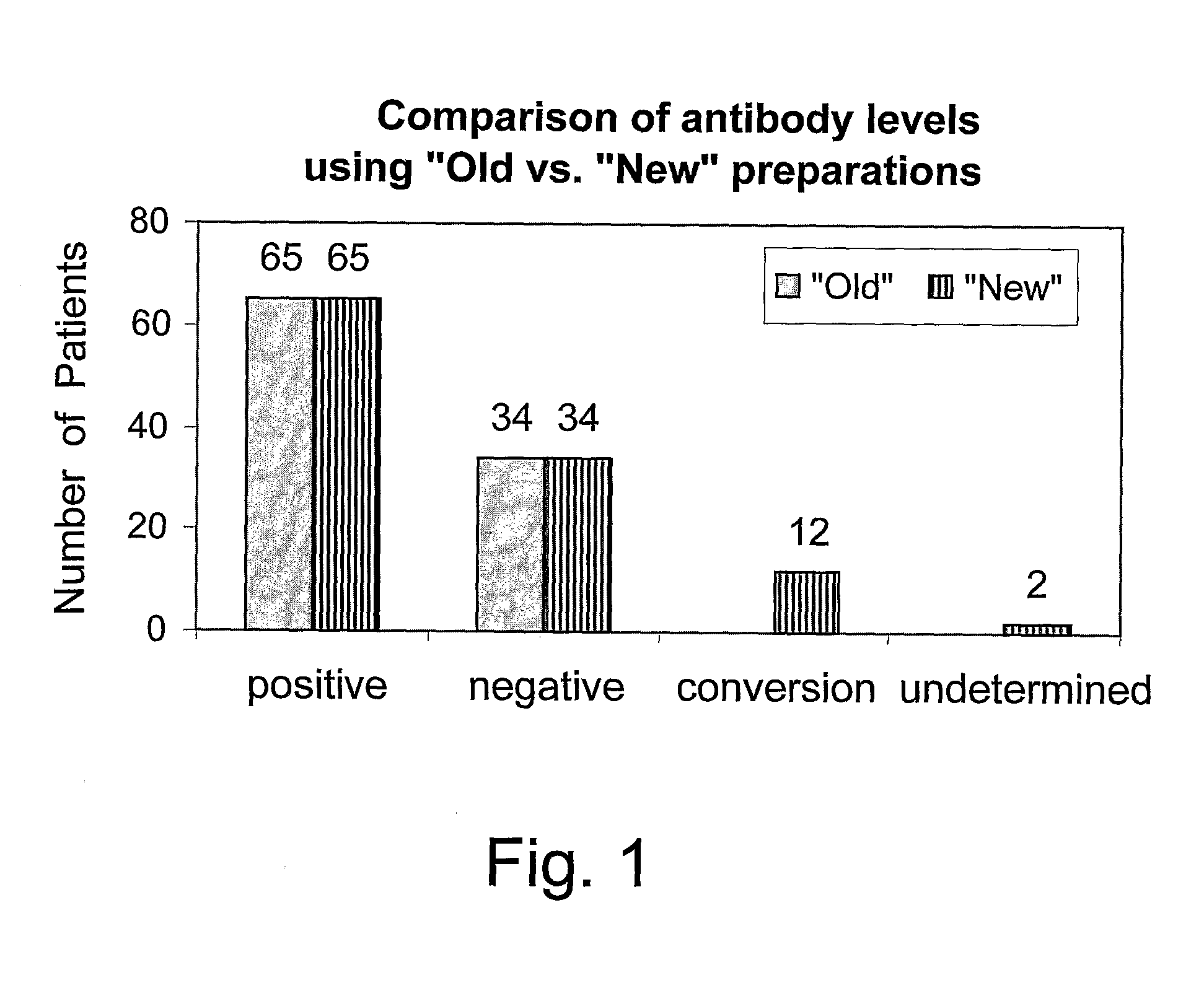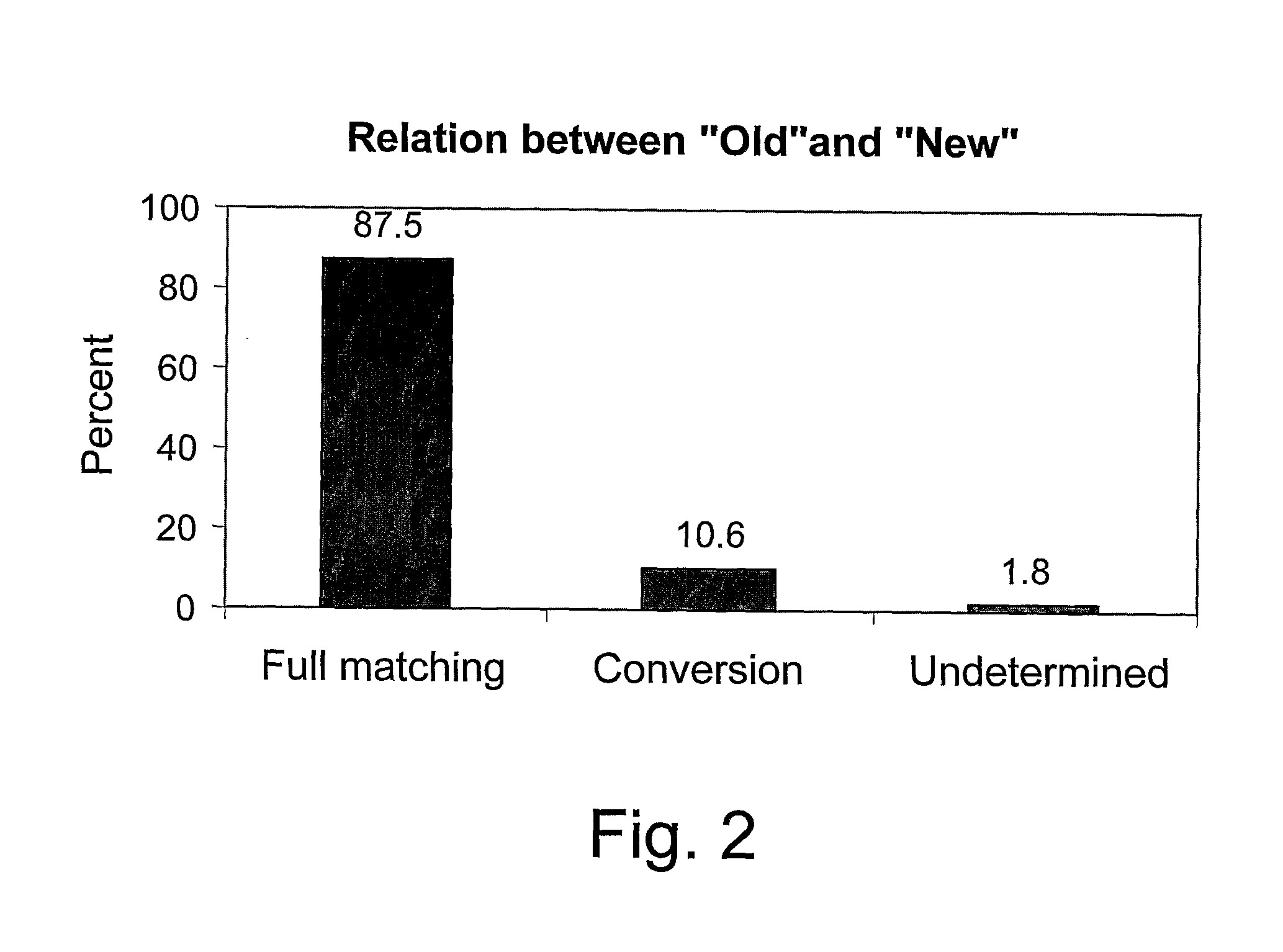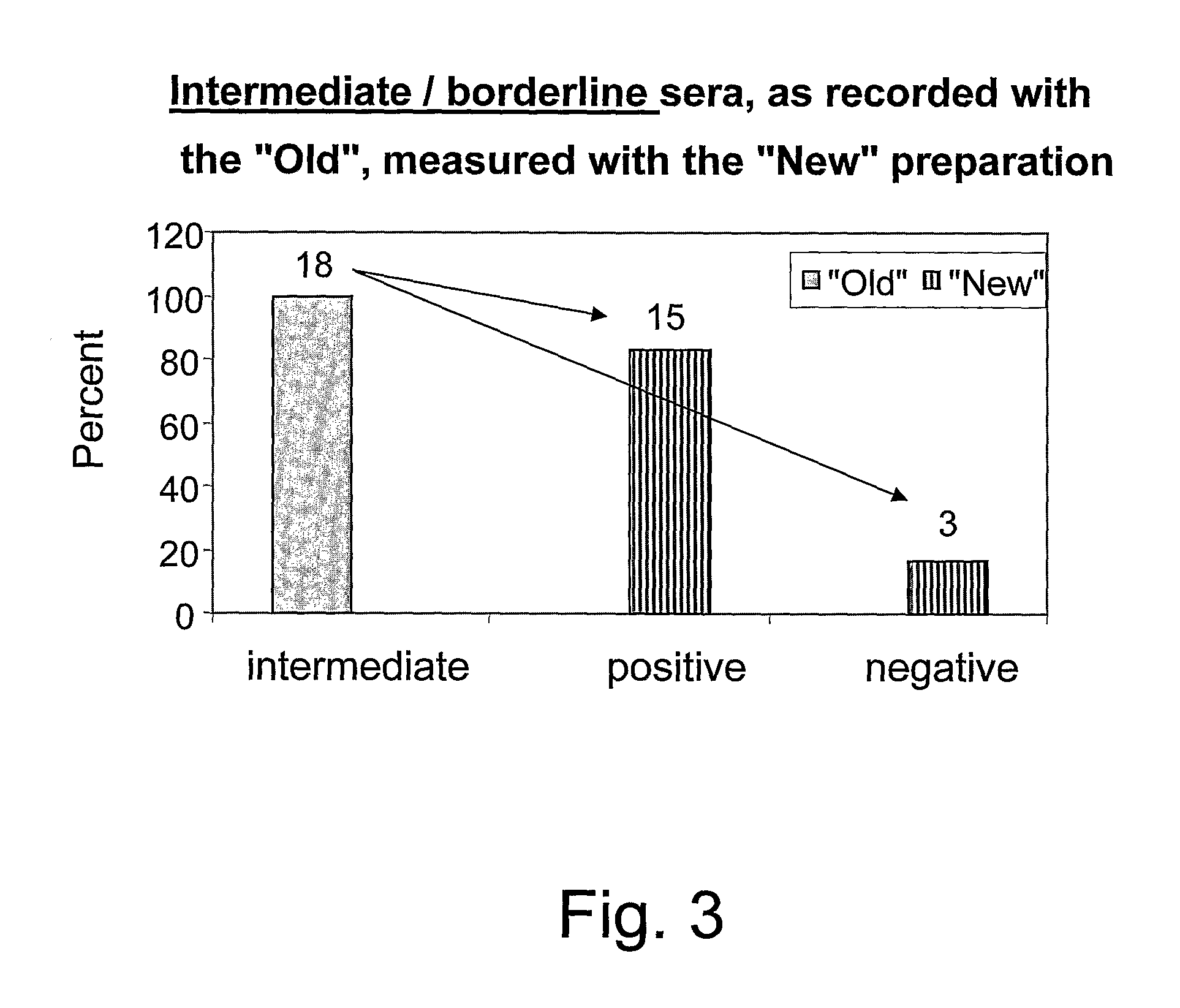Method of detecting infection with urogenital mycoplasmas in humans and a kit for diagnosing same
a technology for detecting human infection and mycoplasma, which is applied in the field of human infection detection of mycoplasma, can solve the problems of inability to detect infection, lack of diagnosis and appropriateness, and inability to be widely availabl
- Summary
- Abstract
- Description
- Claims
- Application Information
AI Technical Summary
Benefits of technology
Problems solved by technology
Method used
Image
Examples
example 1
[0028]A plurality of samples were taken from a plurality of patients suffering from acute or chronic urogenital infection. A mycoplasma strain was cultured from each sample, verifying the presence of mycoplasma by PCR. Six of the samples, in which proved mycoplasma belonged to either of Ureaplasma urealyticum and Ureaplasma parvum by means of PCR, were cultured in a 10B broth, containing 7.5% FCS (fetal calf serum). The cells were centrifuged at 27,000×g for 40 min and washed twice with phosphate buffer saline. The washed pellet of cells was sonicated in the presence of 1 mM phenylmethyulsulfonylfluoride (a proteases inhibitor), and the sonicate, containing all components of the cell, namely un fractionated mixture of proteins, lipoproteins and nucleic acids was used as the mycoplasma antigen.
example 2
[0029]A mixture of ureaplasmal antigens from six different strains of the ureaplasmas species (three Ureaplasma parvum (Up) and three Ureaplasma urealyticum (Uu)) was prepared. The strains were isolated from patients as described in Example 1, and is designated “New”. The identity of the species was verified by the PCR. Sera samples from 113 patients with different diseases, which had been previously analyzed in our laboratory, were tested with an ELISA employing the “New” mixed antigen. In parallel, ELISA was performed, employing antigens prepared from Ureaplasma parvum ATCC # 27815 formerly designated Ureaplasma urealyticum serotype 3 (Up), and Ureaplasma urealyticum ATCC # 27816 formerly designated Ureaplasma urealyticum serotype 4 (Uu). Each of them was used separately, and both are designated here as “Old”. These antigens were used for testing said 113 sera samples. Thus, ELISA tests based on three different antigen systems were compared.
[0030]Several types of sera were used, r...
PUM
| Property | Measurement | Unit |
|---|---|---|
| Antigenicity | aaaaa | aaaaa |
Abstract
Description
Claims
Application Information
 Login to View More
Login to View More - R&D
- Intellectual Property
- Life Sciences
- Materials
- Tech Scout
- Unparalleled Data Quality
- Higher Quality Content
- 60% Fewer Hallucinations
Browse by: Latest US Patents, China's latest patents, Technical Efficacy Thesaurus, Application Domain, Technology Topic, Popular Technical Reports.
© 2025 PatSnap. All rights reserved.Legal|Privacy policy|Modern Slavery Act Transparency Statement|Sitemap|About US| Contact US: help@patsnap.com



